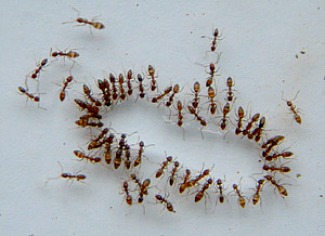Adequate climate conditions determine survival of invasive species

The invasion of alien species is a threat to the integrity of natural ecosystems and one of the objectives of ecologists is to develop models capable of predicting which species can invade new territories and which areas could be affected.
An international team of scientists, including researchers Núria Roura and Crisanto Gómez from University of Girona, and Xavier Espadaler from Universitat Autònoma de Barcelona, has determined the key factors which make it easier for an invasive species to spread globally and determine the success rate of this expansion. According to the research, which was published this week in the prestigious journal PNAS (Proceedings of the National Academy of Sciences), the main elements behind dispersal patterns are climate suitability and habitat modification caused by human activity.
In many cases these modifications create propitious microclimates for the adaptation of invasive species. This is the case of the invasive Argentine ant (Linepithema humile), one of the main global invasive species, which thrive on the climate conditions found in residential areas. The results of the study were obtained by analysing data on the presence or absence of the Argentine ant in over 5,000 locations around the world.
Researchers also observed how the resistance of local ecosystems and geographic dispersals caused by human activity affect these invasive species to a much lower degree than expected. The results thus question the efficacy of management measures based on trying to reduce the entrance of invasive species through transport and the belief that the resistance of local ecosystems is enough to halt the invasions.
References
"Relative roles of climatic suitability and anthropogenic influence in determining the pattern of spread in a global invader". Núria Roura-Pascual, Cang Hui, Takayoshi Ikeda, Gwénaël Leday, David M. Richardson, Soledad Carpintero, Xavier Espadaler, Crisanto Gómez, Benoit Guénard, Stephen Hartley, Paul Krushelnycky, Philip J. Lester, Melodie A. McGeoch, Sean B. Menke, Jes S. Pedersen, Joel P. W. Pitt, Joaquín Reyes, Nathan J. Sanders, Andrew V. Suarez, Yoshifumi Touyama, Darren Ward, Philip S. Ward, Sue P. Worner. PNAS January 4, 2011 vol. 108 no. 1 220-225.


